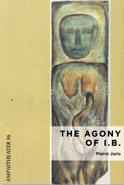Methane Spike
12:52 30 October 2008
NewScientist.com news service
New Scientist staff and Reuters
Levels of climate-warming methane – a greenhouse gas 25 times as potent as carbon dioxide – rose abruptly in Earth’s atmosphere last year, and we don’t know why.
The concentration of methane, the primary component of natural gas, in the atmosphere has more than doubled since pre-industrial times, but remained largely stable over the last decade or so before rising in 2007, researchers said.
This stability in methane levels had led scientists to believe that emissions of the gas from natural sources like livestock and wetlands, as well as from human activities like coal and gas production, were balanced by the rate of destruction of methane in the atmosphere.
But starting early last year, that balance was upset as millions of tonnes of methane were released into the air.
“The thing that’s really surprising is that it’s coming after this period of very level emissions,” said Matthew Rigby of the Massachusetts Institute of Technology. “The worry is that we just don’t understand the methane cycle very well.”
Worldwide increase
Another surprise was that the rise in methane levels happened simultaneously around the globe instead of being centred near known sources of methane emissions in the northern hemisphere, said Rigby, one of the study’s lead authors along with Ronald Prinn, also of MIT.
They say a rise in methane in the northern hemisphere might be the result of a year-long warm spell in Siberia, where wetlands harbour methane-producing bacteria, but they have no immediate answer as to why emissions rose in the southern hemisphere at the same time.
Pre-industrial concentrations of methane were at about 700 parts per billion, and levels rose gradually to 1773 parts per billion by the late 20th century, Rigby says. The rise in 2007 was about 10 parts per billion, a significant jump over such a short period.
Although the concentration of carbon dioxide in the atmosphere is much higher, at around 385 parts per million, methane is a worry as it is much better than carbon dioxide at locking in heat from solar radiation.
Methane can be destroyed, however, by reactions involving an atmospheric “cleanser” called the hydroxyl free radical (OH). The researchers theorize that the rise in methane might be due in part to a decline in atmospheric OH.
They add that it is too soon to tell whether the one-year rise in atmospheric methane is the start of an upward trend or a short-lived anomaly.
Journal reference: Geophysical Research Letters, DOI: 10.1029/2008GL036037 (in press)

 Poasis II: Selected Poems 2000-2024
Poasis II: Selected Poems 2000-2024 “Todesguge/Deathfugue”
“Todesguge/Deathfugue” “Interglacial Narrows (Poems 1915-2021)”
“Interglacial Narrows (Poems 1915-2021)” “Always the Many, Never the One: Conversations In-between, with Florent Toniello”
“Always the Many, Never the One: Conversations In-between, with Florent Toniello” “Conversations in the Pyrenees”
“Conversations in the Pyrenees” “A Voice Full of Cities: The Collected Essays of Robert Kelly.” Edited by Pierre Joris & Peter Cockelbergh
“A Voice Full of Cities: The Collected Essays of Robert Kelly.” Edited by Pierre Joris & Peter Cockelbergh “An American Suite” (Poems) —Inpatient Press
“An American Suite” (Poems) —Inpatient Press “Arabia (not so) Deserta” : Essays on Maghrebi & Mashreqi Writing & Culture
“Arabia (not so) Deserta” : Essays on Maghrebi & Mashreqi Writing & Culture “Barzakh” (Poems 2000-2012)
“Barzakh” (Poems 2000-2012) “Fox-trails, -tales & -trots”
“Fox-trails, -tales & -trots” “The Agony of I.B.” — A play. Editions PHI & TNL 2016
“The Agony of I.B.” — A play. Editions PHI & TNL 2016 “The Book of U / Le livre des cormorans”
“The Book of U / Le livre des cormorans” “Memory Rose Into Threshold Speech: The Collected Earlier Poetry of Paul Celan”
“Memory Rose Into Threshold Speech: The Collected Earlier Poetry of Paul Celan” “Paul Celan, Microliths They Are, Little Stones”
“Paul Celan, Microliths They Are, Little Stones” “Paul Celan: Breathturn into Timestead-The Collected Later Poetry.” Translated & with commentary by Pierre Joris. Farrar, Straus & Giroux
“Paul Celan: Breathturn into Timestead-The Collected Later Poetry.” Translated & with commentary by Pierre Joris. Farrar, Straus & Giroux
i think it’s from the dramatic spike in american consumption of mexican food.